|
|
Post by Peter Lewis on Jan 5, 2016 17:09:58 GMT 12
. . . the Museums other Spad on display. That one was not eveident during my visit. But apparently they also have a huge reserve store somewhere, large enough to house the Solent and many others. |
|
|
|
Post by Peter Lewis on Jan 5, 2016 17:25:31 GMT 12
The next two aircraft neatly illustrate the advances made in single-engined bomber aircraft during WW1. First is the Voisin LAS. The Voisin III (Voisin LA in British service) was a French two-seat bomber and ground attack aircraft of World War I, one of the first of its kind. More than 800 were built, and they served from 1914 to 1916. It was a pusher biplane, developed by Voisin in 1914 as a more powerful version of the 1912 Voisin I design. It also incorporated a light steel frame which made it more durable when operating out of the temporary wartime military aviation airfields. It is also notable for being the first aircraft in the war to win an aerial fight and shoot down an enemy aircraft.On October 5, 1914, over Jonchery, Reims, Sergeant Joseph Frantz and Corporal Louis Quénault of Escadrille VB24 scored the first air-to-air kill (not involving ramming - see Pyotr Nesterov) of the war, shooting down a German Aviatik B.II with machine gun fire. Quénault fired two 48-round magazines at the Germans. The Germans returned fire with rifles. When the Frenchman's 8 mm Hotchkiss M1909 machine gun jammed, he successfully returned fire with his rifle. Oberleutnant Fritz von Zangen and Sergeant Wilhelm Schlichting of FFA 18 fell to their deaths. This is believed to be the first air-to-air kill in any war. Fitted with a more powerful 140hp Salmson P9 engine, the Voisin LA became the Voisin LAS.   Later in the war came the Breguet 14, designed by Louis Breguet, who flew the prototype on its first flight on 21 November 1916. Accepted for service, it was built in very large numbers and production continued for many years after the end of the war. Fast and agile for its size, this aircraft was able to outrun many of the fighters of the day. Its strong construction was able to sustain much damage, it was easy to handle and had good performance. The Breguet 14 is often considered one of the best aircraft of the war. The type continued to be widely used after the war, equipping the French occupation forces in Germany and being deployed to support French troops in the colonies. A special version was developed for the harsh conditions encountered overseas, designated 14 TOE (Théatres des Operations Extérieures). These saw service in putting down uprisings in Syria and Morocco, in Vietnam and in France's attempted intervention in the Russian Civil War. The last trainer examples were not withdrawn from French military service until 1932. 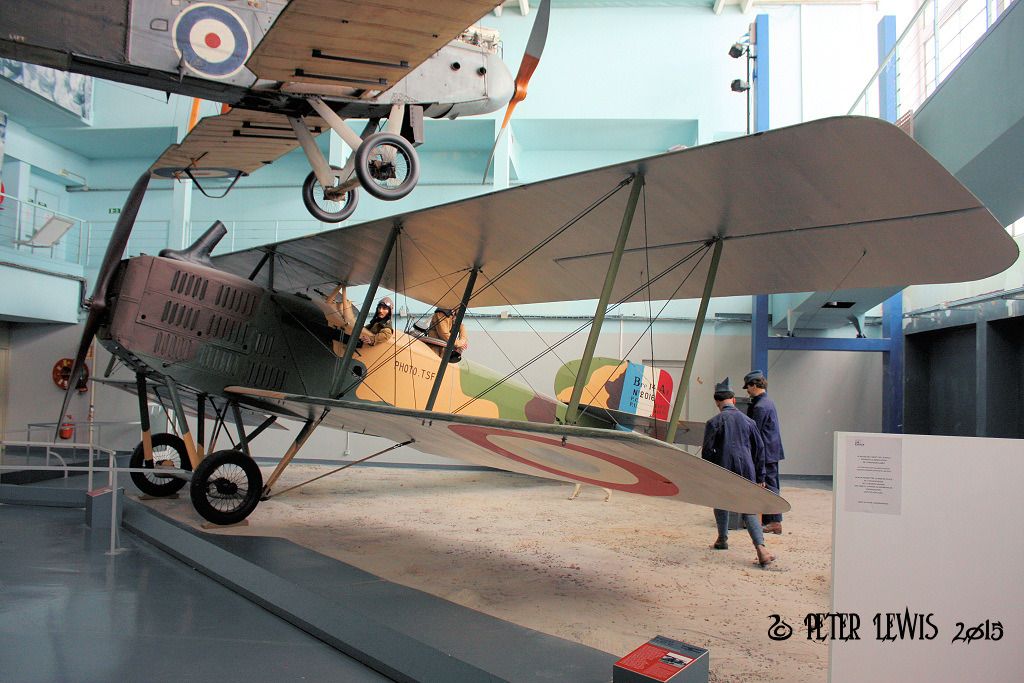 There will now be a bit of a hiatus, as I will be away for a few days. There will now be a bit of a hiatus, as I will be away for a few days. |
|
|
|
Post by Peter Lewis on Jan 13, 2016 22:05:02 GMT 12
Back into it again . . The French seem to have a pencant for designing some remarkably ugly aircraft, and the Caudron G4 is a good example. Entering service in 1915 as the first twin engined aircraft in service in any numbers with the French military, it was actually quite successful despite its odd looks and more than 1400 were built. As well as serving with the Aeronautique Militaire the G5 was used iby Belgium, Finland, Italy, the Royal Naval Air Service, and the US Army Air Force. At the end of 1919 airmen Poulet and Benoist flew a G4 from France to Burma, covering 11,000km in 150 flying hours with 24 staging stops. 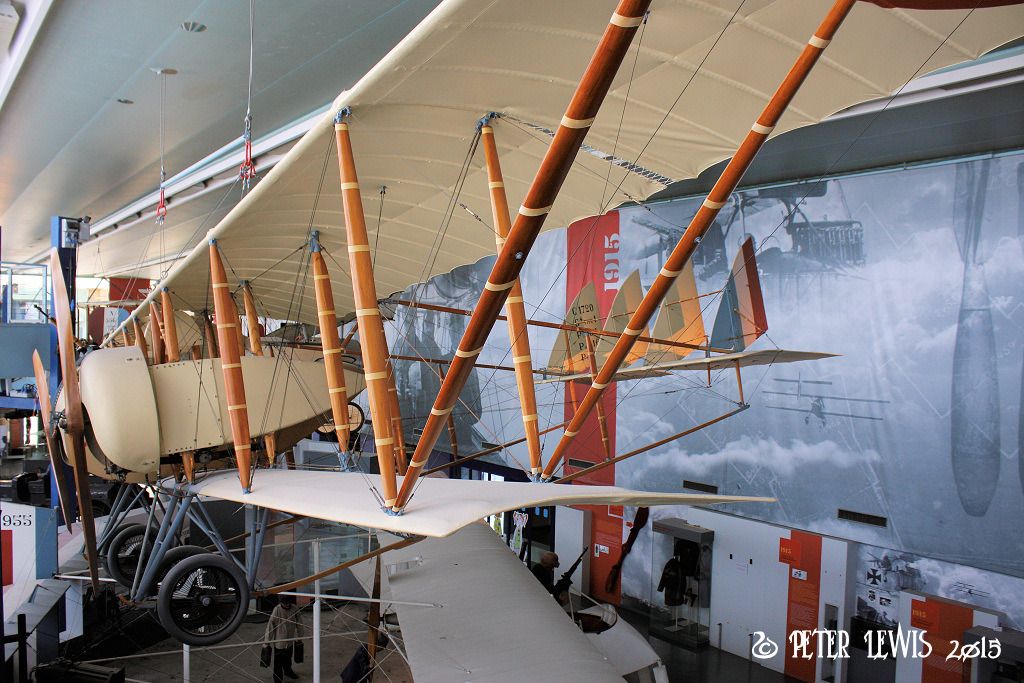 German bomber operations in WW1 are synonymous with the Zepplin airship. This is the rear engine car off Zepplin LZ113. According to the placard at the museum, LZ113 took its maiden flight on 22nd February 1917 and was transferred to the German Navy for operational service on the 14th August. It took part in 15 bombing missions and flew around 12,300km. LZ113 survived the war and was surrendered to France as war reparations on the 8th October 1920. From that date it was used for structural testing. (Other Zepplin listings seem to indicate that LZ113 did not fly until 1918 and saw no operational use). The museum pedestrian walkway alows you to inspect the inside of this item. It would have been draughty, cold and very noisy in there - an OSH nightmare. 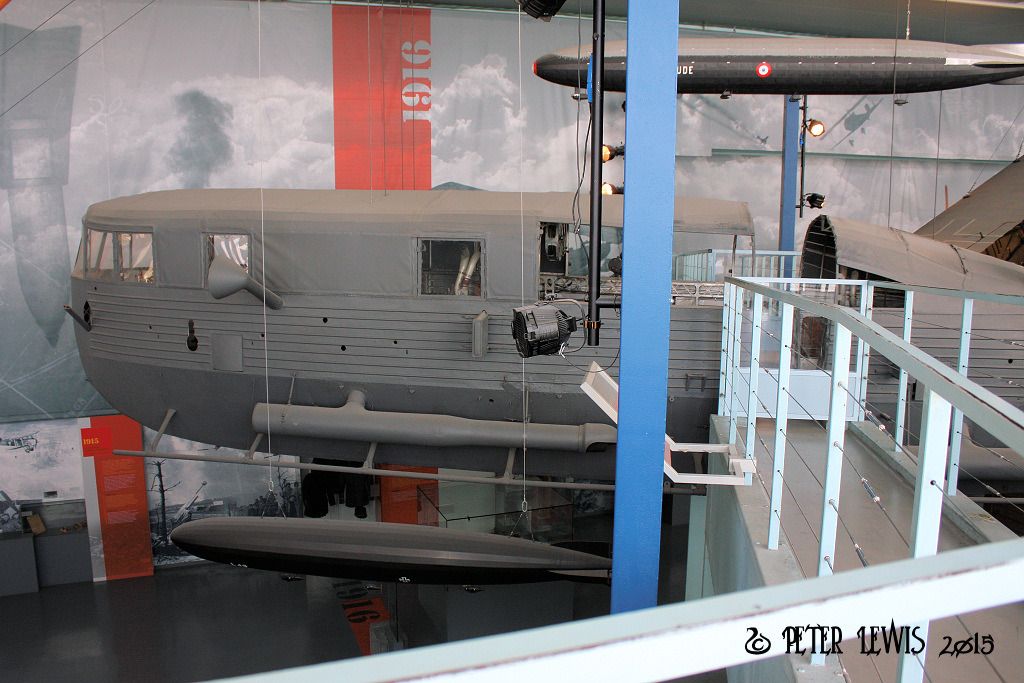
|
|
|
|
Post by Dave Homewood on Jan 14, 2016 0:29:31 GMT 12
That Zeppelin cabin is amazing.
|
|
|
|
Post by suthg on Jan 14, 2016 10:59:22 GMT 12
It would have been worse as an engineer maintaining the engines in their capsules on the large Zepellins! Big noisy engines in a confined space...
|
|
|
|
Post by Peter Lewis on Jan 14, 2016 22:04:03 GMT 12
The biggest downer of the day was that the World War 2 hall was "Closed for Renovation". Isn't that always the way? However, there is a seperate building devoted to the Normandie-Niemen Regiment. Six months after the Germans invaded the USSR in June 1941, talks aimed at closer co-operation between Free France and the Soviet Union resulted in setting up a special squadron with an initial core of 12 fighter pilots and 47 ground staff for service on the Russo-German front. De Gaulle officially promulgated the Groupe de Chasse GC 3 Normandie on 1 September 1942, with Commandant Pouliquen in command. At the end of the war, the regiment had claimed 273 enemy aircraft shot down, 37 probables, and lost 87 aircraft and 52 pilots in return. Some 5,240 sorties were flown and the unit took part in 869 dogfights. The unit also destroyed 27 trains, 22 locomotives, two E-boats, 132 trucks, and 24 staff cars. Forty-two of the squadron's pilots were killed and 30 reached ace status. The squadron's last Yak-3 fighter is on display, as well as many other artifacts. Yak-3 No. 2530 arrived at le Bourget in 1945, and was passed on to the museum in 1947.  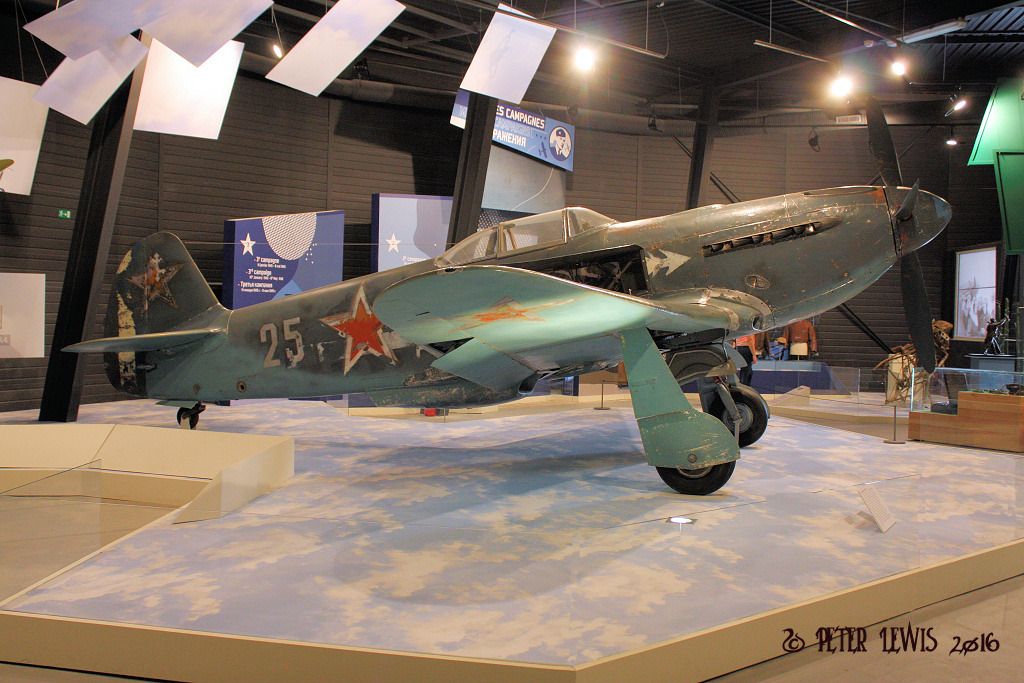 A sobering exhbit is the remains of a Normandie-Niemen Yak-9, which crashed south-east of Smolensk on 31st August 1943 after combat with some Focke-Wulf 190s. The pilot, Captain Paul de Forges, was killed. 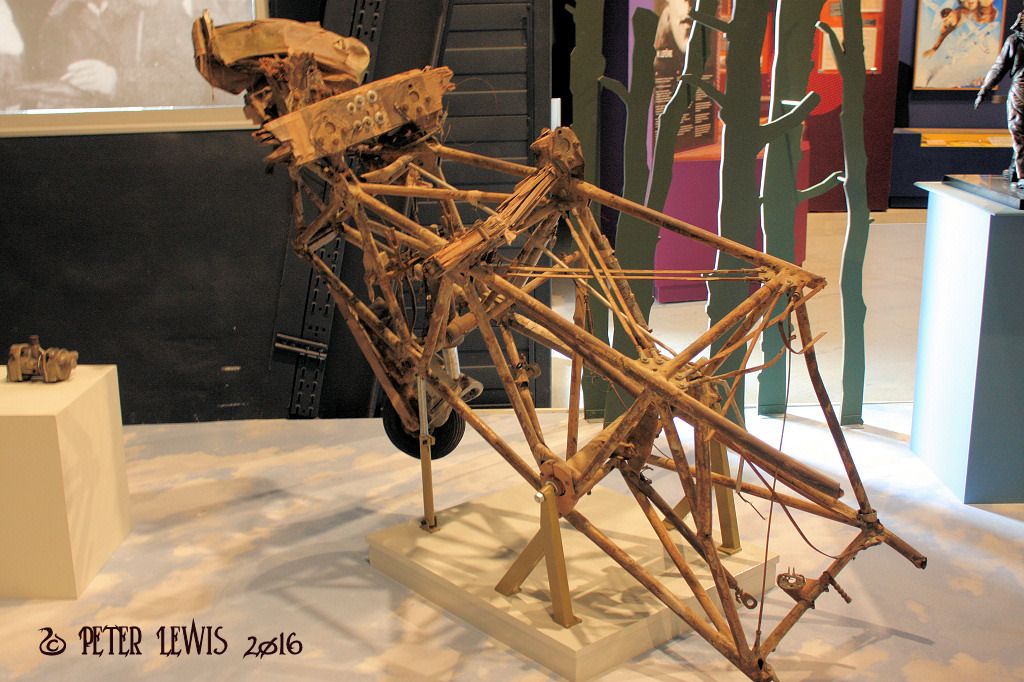 |
|
|
|
Post by Dave Homewood on Jan 14, 2016 23:50:08 GMT 12
Yak 3's are commonplace these days but not like that one, a genuine wartime example. Very interesting.
|
|
|
|
Post by Deleted on Jan 15, 2016 15:26:16 GMT 12
This is fascinating Peter, thank you so much for sharing your photos! I imagine the WW2 exhibit being renovated would've been a real blow, but from the look of it you had more than enough to keep you satisfied.
Guynmeyer's SPAD? WOW! That's amazing!
|
|
|
|
Post by Brett on Jan 15, 2016 16:52:26 GMT 12
|
|
|
|
Post by Peter Lewis on Jan 15, 2016 20:21:33 GMT 12
Nice to see that.
|
|
|
|
Post by Peter Lewis on Jan 15, 2016 20:45:50 GMT 12
There is a substantial collection of rotary-wing aircraft on display. Of major interest to me were the early autogyros. (Note that all autogiros are autogyros, but only autogyros built by or under licence to the Cierva company are autogiros). Cierva C.8L-II G-EBYY was based on the Lynx-engined Avro 504N fuselage. First flown in May 1928 by Bert Hinkler, it competed in the 1928 Kings Cup race but withdrew after it ran out of fuel. After a sales tour of the UK it became the first rotary-wing aircraft to cross the English Channel - from Croydon to Le Bourget - on 18th September, flown by Cierva himself with a french journalist as passenger. Following an extensive sales tour of Belgium, Germany and Holland it returned to Le Bourget in October 1928. G-EBYY has resided in the museum ever since.  The autogyro concept was further developed by Cierva, resulting in the C.30A which entered production in 1934 with 148 being built. Addition licenced production was also undertaken in Germany and France. The French version was the Lioré et Olivier LeO C-30 (and C-301). Early autogiros suffered from relatively long take-off runs. To reduce the take-off length two C-301 aircraft were fitted with the equivalent of Cierva's "Jump" head allowing the aircraft to leap vertically after only a very short run. These C-302s were used extensively for testing rotor and undercarriage components but development was eventually abandoned in 1949/1950. The second C-302, F-BDAD, is exhibited here.  The Focke-Achgelis Fa 330 Bachstelze was a type of rotary-wing kite, known as a gyroglider or rotor kite. They were towed behind some German U-boats during World War 2 to allow a lookout to see farther. When not in use, the Fa 330 was stowed in two watertight compartments aft of the conning tower. Recovering, dismantling, and stowing the Fa 330 took approximately 20 minutes and was a difficult operation. The Fa 330 had some operational success, and around 200 were manufactured.  |
|
|
|
Post by shorty on Jan 15, 2016 21:03:18 GMT 12
I don't want to hi-jack Peter's thread but the exhibits have been changed since I was there so here are two more shots of Guynemer's SPAD. Of interest is the reversed "2" on the Starboard wing 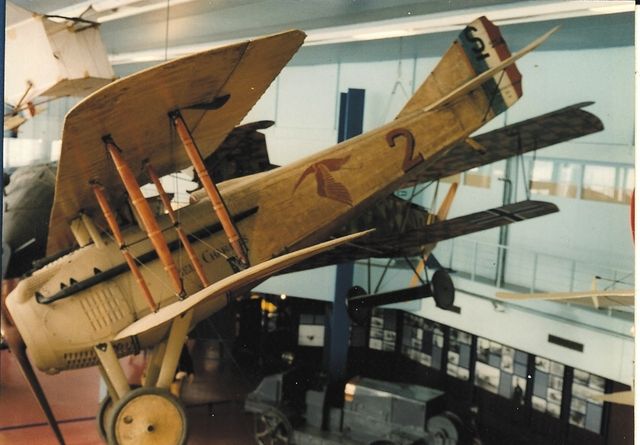 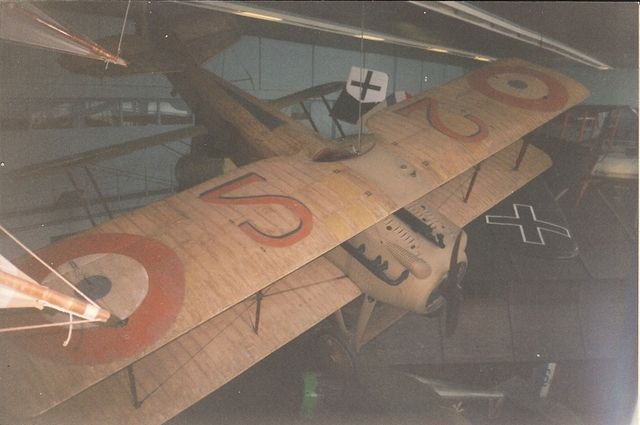 Funnily enough the WW2 hall was closed for renovation when I was there in 1996! Must be an efficient workforce.!! |
|
|
|
Post by Peter Lewis on Jan 16, 2016 16:07:06 GMT 12
I don't have agreat affinity with fling-wings, so I moved on to the 1920s-30s hall. The Farmn F.60 Goliath was originally designed as a heavy bomber, but was too late to see WW1 service. Farman realized there would be no military orders for his design. Nonetheless he was quick to understand that the big, box-like fuselage of the Goliath could be easily modified to convert the aircraft into an airliner. Commercial aviation was beginning to be developed and was in need of purpose-built aircraft. With the new passenger cabin arrangement, the Goliath could carry up to 12 or 14 passengers. Farman was quick to press the Goliath into service and made several publicity flights. On 8 February 1919, the Goliath flew 12 passengers from Toussus-le-Noble to RAF Kenley, near Croydon. Since non-military flying was not permitted at that date, Lucien Bossoutrot and his passengers were all ex-military pilots who wore uniform and carried mission orders for the circumstances. The flight went well, taking 2 hours and 30 minutes. The pilot and passengers were well received in England. The return flight was made the following day and took 2 hours and 10 minutes. Airlines, which were appearing very quickly all over Europe, were quick to acquire the F.60 It served air routes in France, Belgium, Colombia and Romania and was licence-built in Czechoslovakia. About 60 were produced. The fuselage of F-HMFU Île de France of Air Union on display here. It crashed at Wadhurst, East Sussexon 16th March 1925. Three passengers were killed and two were injured. The Farman was preumably repaired as it later saw service in Switzerland with Joseph Thoret. It's registration was not cancelled until 1 June 1932. (Presumably the legs were not originally fittings - they make it look like something out of a Peter Jackson film).

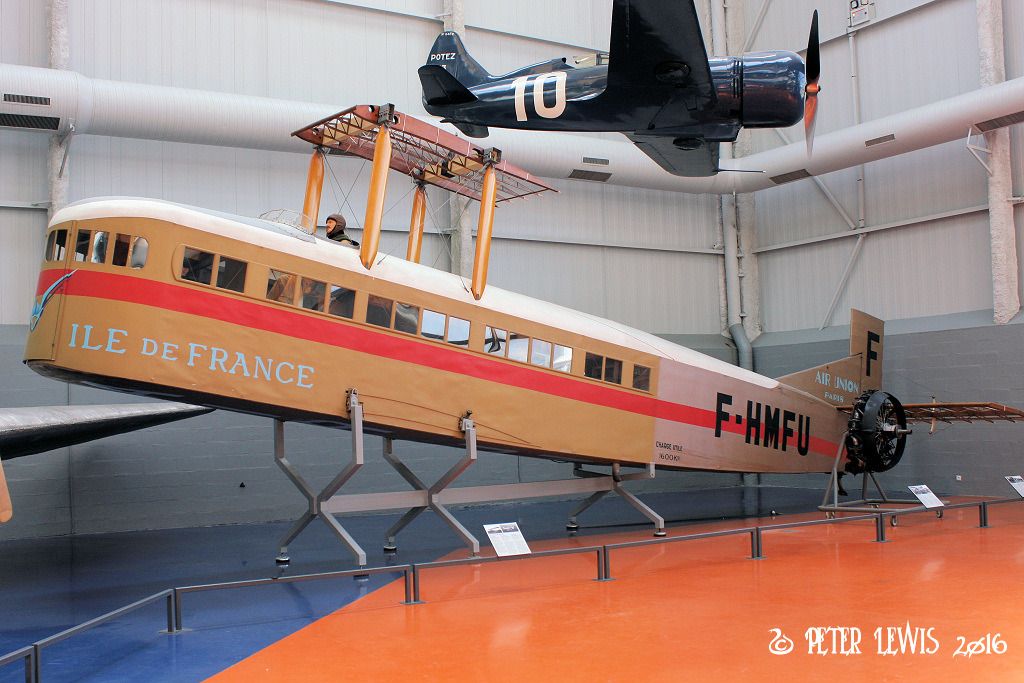
At the other end of the size scale is this Mignet HM.14 Pou du Ciel, aka Flying Flea
The Flea popularized amateur aircraft construction world-wide in the 1930s, but was eventually banned after several were involved in fatal crashes caused by unrecoverable nose-dives.
This one is powered by a Aubier-Dunne engine of 20hp


|
|
|
|
Post by Peter Lewis on Jan 17, 2016 15:48:02 GMT 12
The Junkers F.13 was the world's first all-metal transport aircraft, developed in Germany at the end of World War I. It was an advanced cantilever-wing monoplane, with enclosed accommodation for four passengers. Over 300 were sold. It was in production for thirteen years and in commercial service for almost twenty. In the era of wood-and-fabric aircraft, this was a great acheivement. Most of the F.13s produced before completion of the marque in 1932 were built at Junkers German base at Dessau. During the difficult 1921-3 period production was transferred to Junkers plants at Danzig and Reval. In 1922-3, Hugo Junkers signed a contract with the Soviet Union to produce the aircraft in a Soviet factory at Fili near Moscow which became known as "Plant no. 22". Some of these aircraft served Soviet airlines and some the Red Army. More that 300 F.13s were built, and they served in many countries. There is no indication of the history of this particular airframe.   Much more familiar to kiwis is the de Havilland Dominie. This particular aircraft was built as a DH89A HG721 and was civilianized as G-ALGB in November 1949. It moved to France in October 1954  |
|
|
|
Post by baz62 on Jan 17, 2016 17:47:05 GMT 12
The Junkers F.13 was the world's first all-metal transport aircraft,  Is this the one they had a new build version of at Oshkosh (I think)? |
|
|
|
Post by Peter Lewis on Jan 18, 2016 7:16:33 GMT 12
Yes, apparently the Rimowa luxury luggage company have gone into the repro business. Not sure of the current demand for such an item.  |
|
|
|
Post by Deleted on Jan 18, 2016 15:31:54 GMT 12
More great photos Peter! Thanks for the Autogiro shots, I have a real soft spot for the C.30.
That Farman Goliath is a shock - I'd no idea part of one was still in existence. And as for the Flea: what a lovely little example! An oft-forgotten part of their history is that Henri Mignet tweaked the design to make it safe to fly and, as a result, several HM.14s fly around the world (mostly in Europe). I also checked with the CAA last year and they said the HM.14 can be built and registered to fly in New Zealand, although it would now have a ZK rego.
|
|
|
|
Post by Peter Lewis on Jan 18, 2016 21:10:43 GMT 12
The Caudron C.270 Luciole ("Firefly") was a sporting, touring and trainer aircraft produced in France in the 1930s. With it's folding wings it was a popular choice of aero clubs, and could be considered the French equivelant of the DH60 Moth. The type proved immensely successful, with over 700 machines built in the decade leading up to World War 2. Of these, 296 were purchased by the French government for its pilot training programme, the Aviation Populaire. Many examples saw wartime service as liaison aircraft, and those surviving the conflict saw postwar use as glider tugs in the Ecole de l'Air. C.277 No. 7156.14 F-AOFX is a C.270 modified to a single-seat glider tug and was operated as such by an aero club. 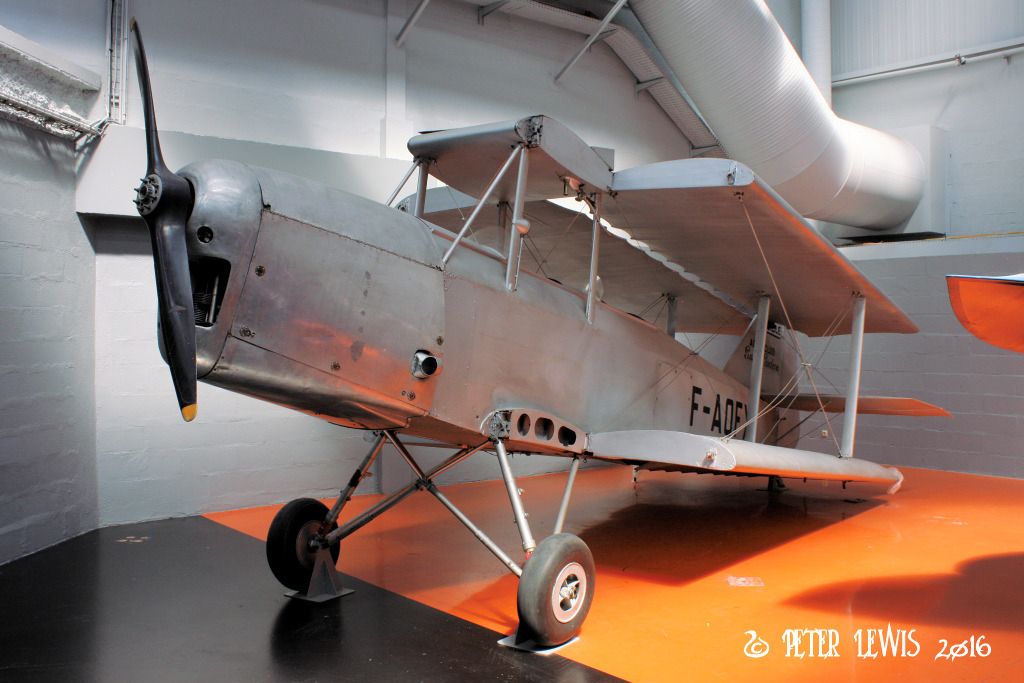 The Morane-Saulnier MS.230 was designed to meet French Air Ministry requirements and was the main elementary trainer for the French Armée de l'Air throughout the 1930s, Almost all French pilots flying for the Armée de l'Air at the outbreak of World War II had had their earliest flight training in this type. It first flew in February 1929 and proved to be an excellent and stable machine which was very easy to fly. It saw service with military flight schools throughout France and was exported to the air forces of numerous other countries. It also became a popular aircraft for sporting aviation. An example won the Michelin Cup in 1929. A MS.230 was used at the end of the movie The Blue Max as the "new monoplane" in which Lt. Stachel is killed during a test flight.   |
|
|
|
Post by Deleted on Jan 19, 2016 15:17:13 GMT 12
The MS.230 - now that's a mounting/display method I've never seen before. Definitely makes me think of Stachel and the movie..."show them some real flying!"
|
|
|
|
Post by Dave Homewood on Jan 19, 2016 16:05:35 GMT 12
My first thought was some of the guy wires had broken and it was hanging by a thread  |
|

